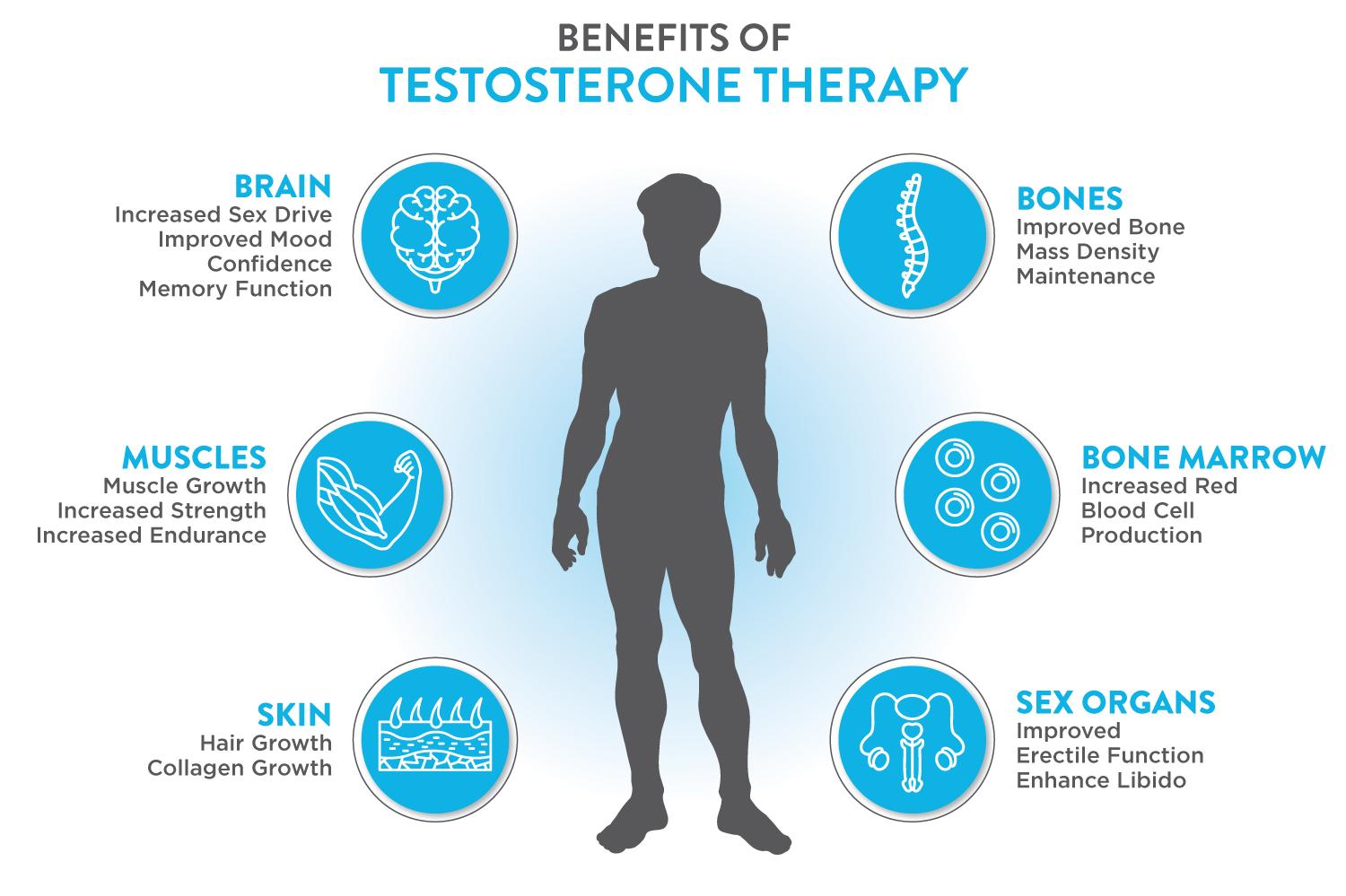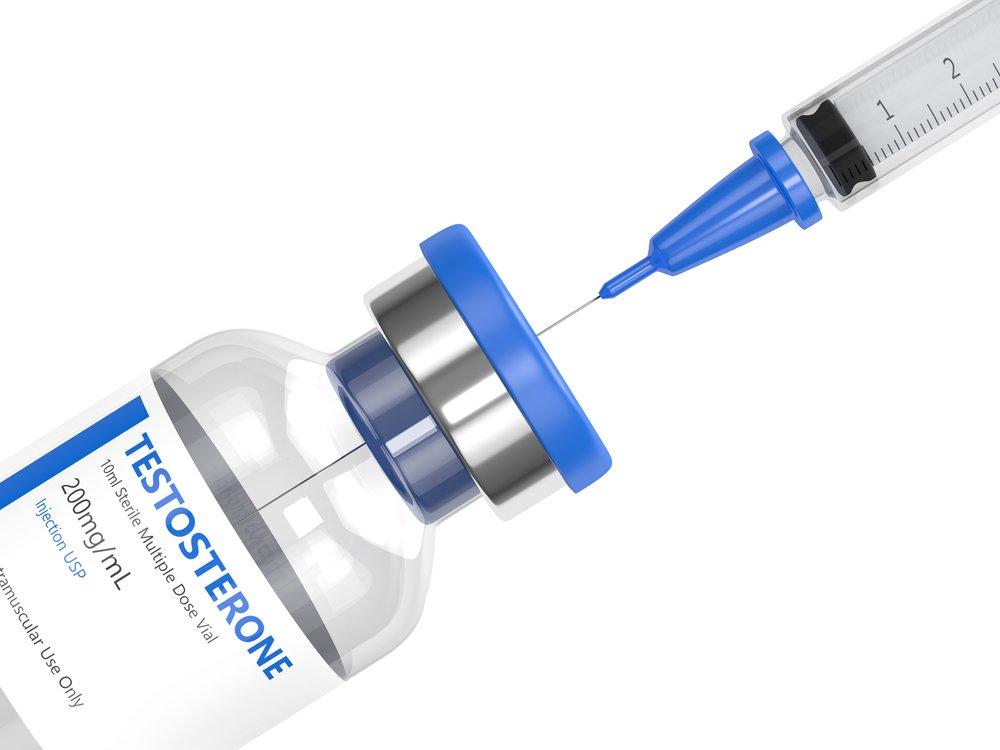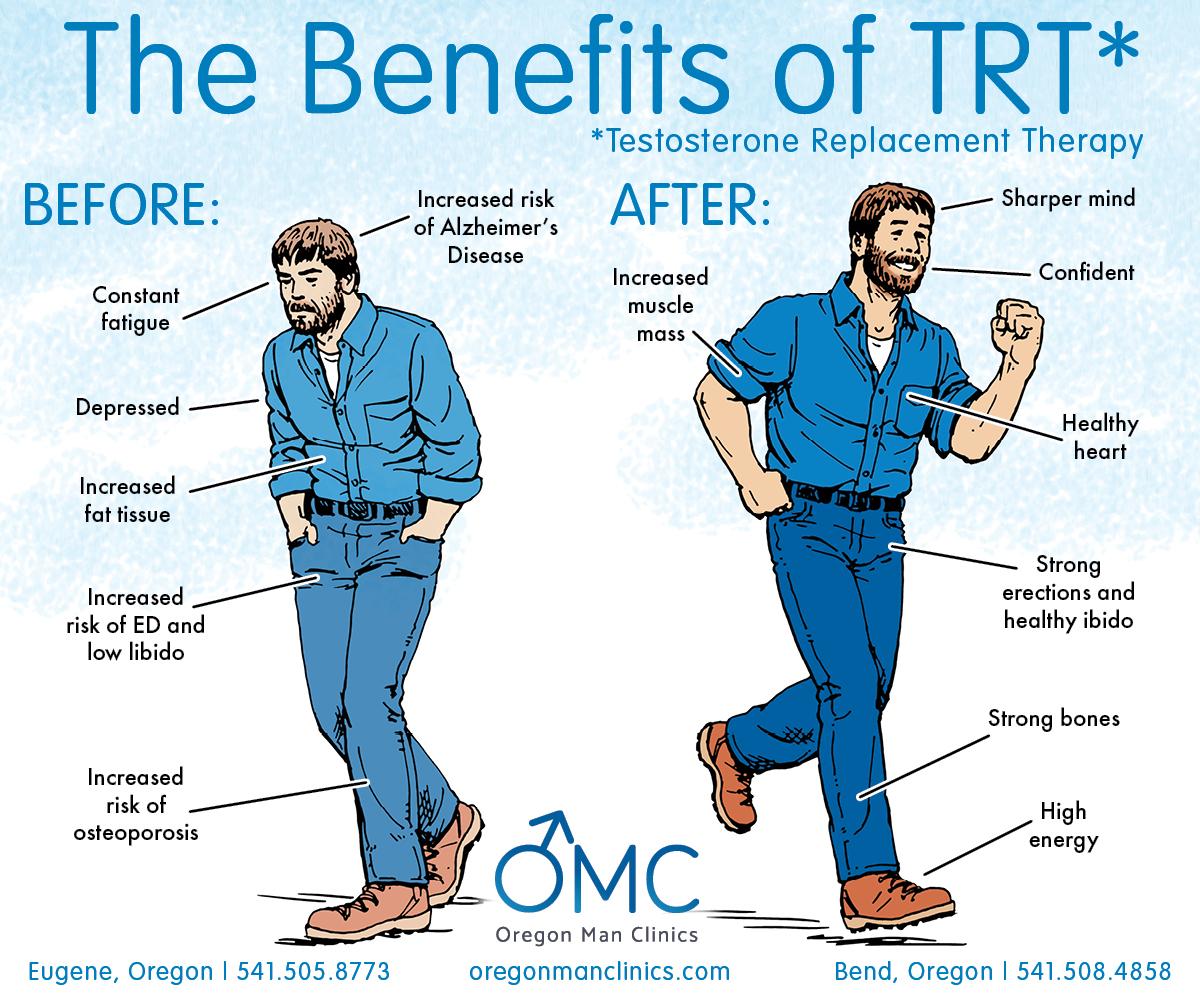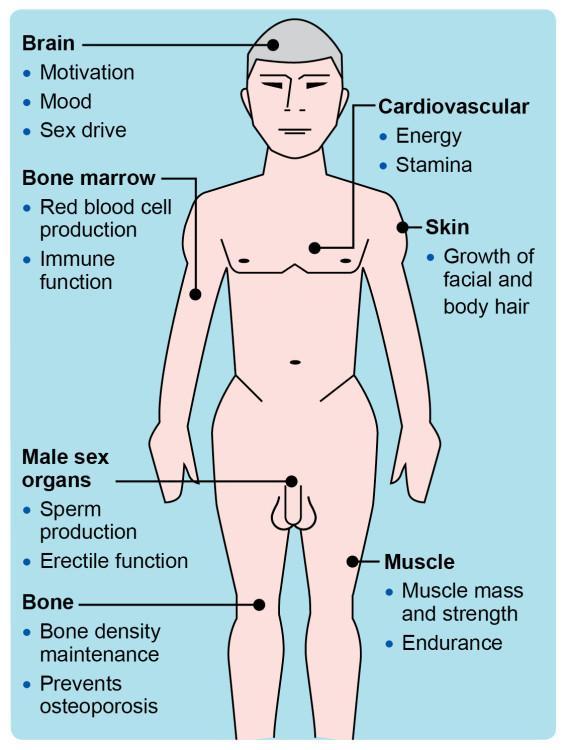In a world where fitness trends come and go like the changing seasons, the quest for effective methods to shed stubborn belly fat continues to capture the attention of health enthusiasts and scientists alike. Among the myriad of approaches, testosterone therapy has emerged as a captivating topic, stirring curiosity and debate. Traditionally associated with muscle strength and vitality, testosterone is now being explored for its potential role in weight management, particularly in the battle against visceral fat. As we delve into the science and implications of testosterone therapy in reducing belly fat, we embark on a journey that intertwines hormonal balance with the pursuit of a healthier, more energetic life. Join us as we dissect the nuances, benefits, and considerations of this intriguing approach, illuminating the path toward understanding how testosterone might just be the key to achieving that elusive waistline.
Understanding Testosterones Role in Body Composition
Testosterone plays a crucial role in shaping body composition, influencing muscle mass, fat distribution, and overall metabolic health. It is a key hormone that helps maintain muscle strength, promotes protein synthesis, and regulates fat storage. As testosterone levels naturally decline with age, many individuals experience shifts in body composition, particularly an increase in visceral fat around the abdomen. This hormonal imbalance can lead to challenges in maintaining a healthy weight, making it essential to understand how testosterone affects fat metabolism and distribution in the body.
Research has shown that testosterone therapy may assist in combating belly fat by enhancing lean muscle mass and boosting metabolic rate. By optimizing testosterone levels, individuals can potentially experience changes in their body composition, including:
- Increased muscle strength: Enhanced testosterone levels support muscle development.
- Decreased fat mass: Improved fat metabolism helps reduce overall body fat.
- Enhanced energy levels: Higher testosterone can lead to increased vitality and stamina.
| Effect of Testosterone Therapy | Benefit |
|---|---|
| Improved muscle mass | Supports metabolism |
| Reduction in belly fat | Enhances physique |
| Boost in energy | Encourages physical activity |

The Science Behind Testosterone Therapy and Fat Reduction
Understanding the biochemical role of testosterone in the body can illuminate its potential benefits for fat reduction, particularly in the visceral area. Research suggests that testosterone helps regulate fat metabolism and promotes muscle growth, which is critical for achieving a healthier body composition. This hormonal influence means that when testosterone levels are optimal, the body is more efficient at burning fat rather than storing it. Factors contributing to changes in testosterone levels include age, lifestyle choices, and certain health conditions, all of which can impact overall fat distribution.
The application of testosterone therapy is increasingly recognized as a viable option for individuals struggling with weight management, especially as they age. By restoring testosterone to normal levels, patients may experience several benefits, including:
- Increased muscle mass: Enhanced muscle development can naturally lead to higher calorie expenditure.
- Reduced fat storage: Optimal testosterone levels can help decrease the accumulation of visceral fat.
- Improved mood and energy: Enhanced psychological well-being can motivate individuals to engage in physical activities.
| Testosterone Therapy Benefits | Potential Results |
|---|---|
| Enhanced metabolic rate | Increased fat burning |
| Greater muscle retention | Improved body composition |
| Increased energy levels | More active lifestyle |

Identifying Candidates for Testosterone Therapy
Identifying individuals who may benefit from testosterone therapy requires a careful assessment of various factors. Primarily, symptoms linked to low testosterone levels should be closely examined. Common symptoms include:
- Increased body fat, particularly around the abdomen
- Fatigue and decreased energy levels
- Reduced muscle mass and strength
- Decreased libido
- Mood changes, such as depression or irritability
Furthermore, a comprehensive evaluation should also include medical history and lifestyle factors. Key considerations are:
- Existing medical conditions, such as obesity or diabetes
- Any medications currently being taken that may influence hormone levels
- Family history of hormone-related disorders
- Diet and exercise patterns that may contribute to hormonal imbalances
To streamline this assessment, the following table can assist in identifying potential candidates:
| Factor | Criteria |
|---|---|
| Symptom Presence | Yes for 3 or more symptoms |
| Age | 40 years or older |
| Body Mass Index (BMI) | 25 or higher |
| Medical Conditions | Diabetes, hyopgonadism, etc. |

Expected Outcomes: Belly Fat Loss and Beyond
The application of testosterone therapy has shown promising results not only in reducing belly fat but also in fostering a multitude of other health improvements. Those undergoing treatment often experience an increase in muscle mass, which complements fat loss by enhancing metabolism. Moreover, as individuals shed abdominal fat, they may notice improvements in energy levels and overall mood stability. The synergistic effect between reduced belly fat and elevated testosterone levels can also lead to improved sexual health, reinvigorating intimacy in personal relationships.
Beyond the aesthetic and physical benefits, it’s essential to acknowledge the profound impact on metabolic health. A significant reduction in belly fat can lower the risks associated with chronic diseases, such as diabetes, heart disease, and metabolic syndrome. Here’s a quick overview of the potential health outcomes:
| Health Outcome | Benefit |
|---|---|
| Belly Fat Reduction | Improved body composition |
| Increased Energy Levels | Enhanced daily productivity |
| Improved Mood | Greater emotional stability |
| Enhanced Sexual Health | Boosted libido and performance |
| Metabolic Improvement | Reduced risk of chronic diseases |
Incorporating Lifestyle Changes to Maximize Results
To truly harness the benefits of testosterone therapy for reducing belly fat, it’s essential to pair your treatment with strategic lifestyle modifications that support metabolic health. Focus on adequate nutrition, choosing whole foods rich in proteins, healthy fats, and fibrous vegetables. Incorporating a balanced diet not only complements hormone therapy but also aids in stabilizing blood sugar levels, reducing cravings, and promoting overall wellness. Consider these dietary adjustments:
- Increase protein intake: Aim for lean sources such as chicken, turkey, beans, and legumes.
- Incorporate healthy fats: Avocados, nuts, and olive oil can help regulate hormones.
- Stay hydrated: Drinking ample water can improve metabolism and aid in digestion.
Physical activity is another crucial element to support your goals. Integrating a mix of strength training and aerobic exercises can optimize your body’s response to testosterone therapy. Not only does exercise enhance muscle mass, which can further increase metabolic rate, but it also releases endorphins that contribute to better mood and reduce stress levels, both of which can hinder weight loss. Here are some effective strategies:
- Engage in strength training: Aim for at least 2-3 sessions per week to build muscle.
- Incorporate cardio: High-Intensity Interval Training (HIIT) can be particularly effective for burning fat.
- Prioritize consistency: Establish a routine that fits your lifestyle and stick with it over time.
Navigating Potential Risks and Side Effects
Engaging in testosterone therapy can bring about significant changes in body composition, especially in the pursuit of reducing stubborn belly fat. However, it’s crucial to recognize that this treatment may not be suitable for everyone. Potential risks associated with testosterone therapy include mood swings, acne, and sleep disturbances. Individuals undergoing this therapy should monitor for these side effects actively, as they may alter not only physical health but emotional well-being as well. Additionally, an increase in testosterone levels can sometimes lead to higher red blood cell counts, which raises the risk of cardiovascular issues, making regular medical check-ups essential for maintaining good health.
Furthermore, the dosage and duration of treatment can greatly influence the likelihood of adverse effects. Prior to initiating therapy, patients should engage in a thorough discussion with their healthcare provider regarding their medical history and any pre-existing conditions. Considerations should include:
- Prostate Health: Testosterone therapy may exacerbate issues related to the prostate.
- Liver Function: Monitor liver enzymes as therapy may lead to liver complications.
- Hormonal Balance: An imbalance can result in issues such as gynecomastia (enlargement of breast tissue in men).
It’s advisable to establish a comprehensive monitoring plan that may include:
| Monitoring Aspect | Frequency |
|---|---|
| Testosterone Levels | Every 3-6 months |
| Red Blood Cell Count | Every 6-12 months |
| Prostate Specific Antigen Levels | Annually |
By navigating these potential risks with a proactive approach, individuals can better assess the benefits of testosterone therapy in their journey to reducing belly fat while maintaining overall health and wellness.
Consulting Healthcare Professionals for Informed Decisions
Deciding to pursue testosterone therapy is a significant choice that requires careful consideration and professional oversight. Consulting with healthcare professionals ensures that you receive personalized advice based on your individual health profile. Doctors can offer insights into how testosterone therapy might affect your body composition, particularly concerning belly fat reduction. They may recommend comprehensive blood work, physical examinations, and lifestyle assessments to tailor an approach that aligns with your health goals. Such professional guidance can also help identify potential side effects and interactions with other medications, giving you a clearer picture of what to expect.
Furthermore, discussing your options with specialists can help you navigate the varying treatment modalities available today. Options may include injections, topical gels, or pellets, each varying in effectiveness and patient experience. The following factors can be crucial in this conversation:
- Age and Hormone Levels: Understanding your natural testosterone levels and how they relate to your age can guide treatment.
- Health Conditions: Existing health issues, such as heart disease or sleep apnea, will influence the safety and suitability of testosterone therapy.
- Lifestyle Factors: Nutrition, exercise habits, and stress levels play key roles in the effectiveness of any treatment regimen.
| Consideration | Importance |
|---|---|
| Pre-treatment Evaluation | Identifies underlying health issues |
| Monitoring Progress | Tracks treatment effectiveness and side effects |
| Collaborative Care | Ensures multidisciplinary approach to health |
Q&A
Q&A on Testosterone Therapy for Reducing Belly Fat
Q1: What is testosterone therapy, and how does it relate to belly fat?
A1: Testosterone therapy involves the administration of testosterone to individuals with low levels of the hormone. It’s most commonly prescribed for men experiencing symptoms of low testosterone, known as “low T.” Researchers have found links between testosterone levels and body fat distribution, particularly in the abdominal area. Higher testosterone levels may be associated with reduced belly fat, as the hormone can influence muscle mass and fat distribution.
Q2: What does the research say about testosterone and belly fat reduction?
A2: Several studies indicate that testosterone therapy can lead to reductions in abdominal fat. Men undergoing testosterone therapy have often reported improvements in body composition, including increased muscle mass and decreased visceral fat. However, the exact mechanisms remain complex and involve a combination of factors like metabolism and insulin sensitivity.
Q3: Is testosterone therapy suitable for everyone wanting to lose belly fat?
A3: No, testosterone therapy is not suitable for everyone. It is primarily prescribed to individuals with clinically low testosterone levels. For those without a medical need, using testosterone therapy as a weight-loss strategy can lead to potential side effects, such as mood swings, increased aggression, and possible cardiovascular risks. It’s essential to consult a healthcare professional to assess individual circumstances.
Q4: Are there any lifestyle changes that can complement testosterone therapy for better results?
A4: Absolutely! While testosterone therapy can help, combining it with a healthy lifestyle tends to yield the best results. Regular physical activity, particularly strength training and cardiovascular exercises, alongside a balanced diet rich in whole foods can significantly enhance the effects of therapy. Stress management and adequate sleep are also crucial for hormonal balance and overall health.
Q5: What are the potential risks and side effects of testosterone therapy?
A5: Like any medical treatment, testosterone therapy comes with potential risks and side effects. These may include sleep apnea, acne, breast enlargement, and increased red blood cell counts. More serious risks can include heart-related issues and potential complications with prostate health. Regular monitoring by a healthcare provider is essential to minimize these risks.
Q6: How long does it take to see results from testosterone therapy?
A6: Results can vary widely among individuals, but many may notice changes in body composition within a few months of starting therapy. Initial effects, such as improved energy levels and mood, might be seen sooner, while significant reductions in belly fat and muscle gain can take six months to a year or more. Consistency in therapy and lifestyle adjustments plays a crucial role in achieving desired outcomes.
Q7: Is there anything else to consider before starting testosterone therapy for belly fat reduction?
A7: Yes, before starting testosterone therapy, it’s crucial to undergo a comprehensive evaluation, including hormone level testing and a thorough discussion about health history. Consider all potential benefits and risks with your healthcare provider, and remember that maintaining long-term lifestyle changes is essential for sustainable results beyond therapy.
By approaching testosterone therapy thoughtfully and with informed guidance, individuals can better navigate the quest for reducing belly fat – all while prioritizing their health and well-being.
In Retrospect
As we conclude our exploration of testosterone therapy as a potential ally in the battle against belly fat, it’s clear that this approach may offer a promising avenue for many seeking to reclaim their health and vitality. However, it’s essential to remember that hormone therapy is not a one-size-fits-all solution; individual circumstances, health conditions, and lifestyle choices play a critical role in determining its effectiveness.
Before embarking on any treatment, a comprehensive consultation with a qualified healthcare professional is vital to navigate the complex landscape of hormones and body composition safely. By combining personalized medical advice with healthy eating, regular exercise, and mindful living, you can empower yourself to achieve lasting results.
In the quest for a healthier, leaner self, the journey is often as important as the destination. Embracing hormonal balance, informed decision-making, and an active lifestyle may not only help reduce belly fat but also enhance overall well-being. As with any transformation, patience, persistence, and a touch of self-compassion will serve you well along the way. Here’s to making informed choices and striving toward a healthier future!










